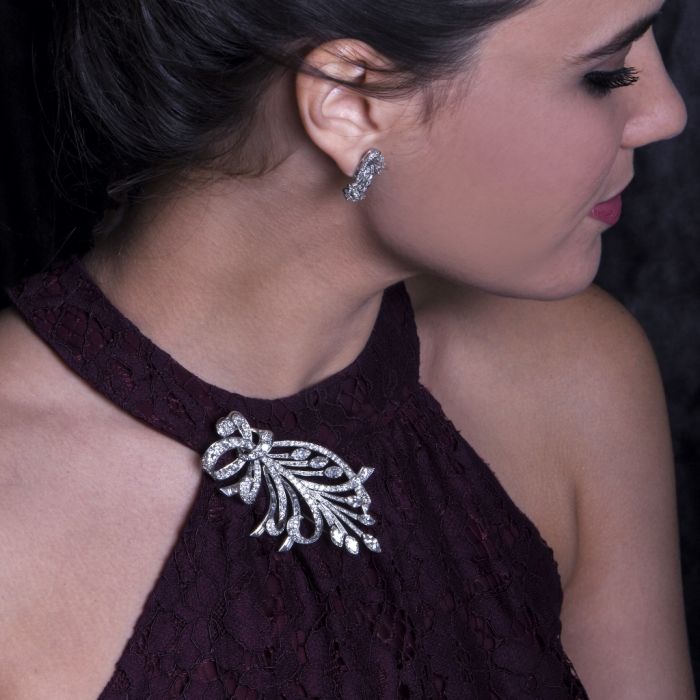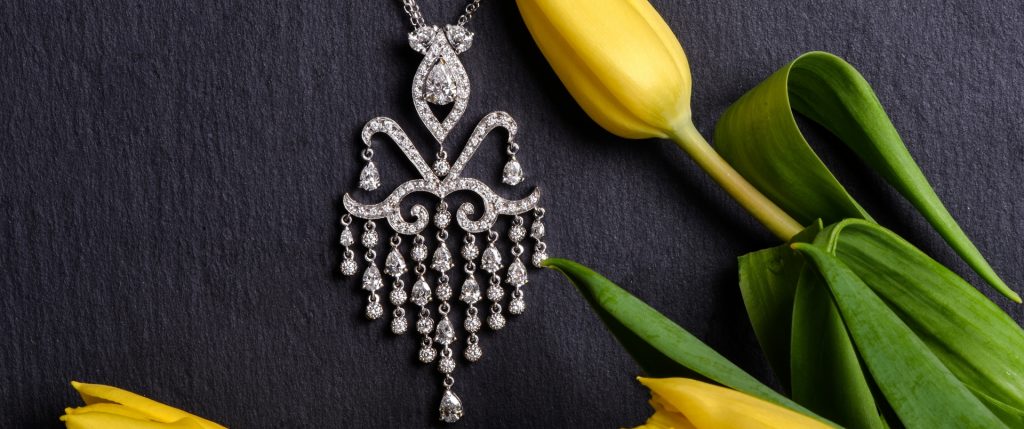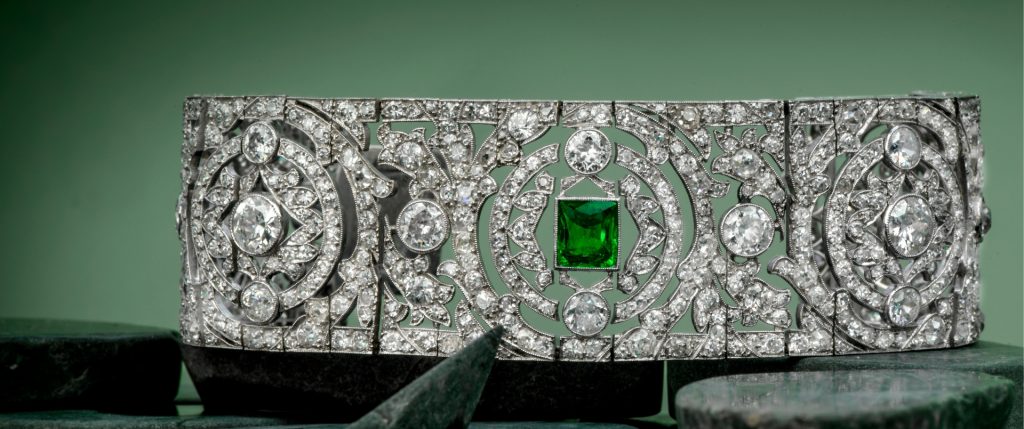
A GUIDE TO ANTIQUE JEWELRY
Many people confuse vintage with antique jewelry. So, what is the difference?
Basically, antique jewelry consists of pieces from more than a hundred years ago. Vintage can be anything from less than one hundred years old and typically prior to 1999. There is no single antique ‘look’, of course, as there are many different styles of jewelry from different periods, each one with its own fashion and with the use of certain precious gemstones specific to the time. Certain stones and designs were more popular in certain eras, so if you are looking to invest in antique pieces, you may be more attracted to the jewelry of a particular era.
Georgian (1714-1837): Influenced by the Classical revival during Napoleon’s First Empire, women wore delicate dresses and low necklines, so the jewelry of the day consisted of chandelier earrings, riviere necklaces and floral spray brooches. This period often featured shapes from the natural world such as leaves, birds and flowers; the most popular stones used in Georgian jewelry were garnets, emeralds, white and rose diamonds, coral and topaz.
Dover has an exquisite antique Georgian emerald, diamond, silver and gold pendant currently in stock. It features a large oval Columbian emerald surrounded by 90 old mine-cut diamonds, with a dangling Columbian briolette emerald. This is a rare and highly collectible piece.
Early Victorian Romantic Period (1837-1850): Jewelry from the Early Victorian era was romantic, sentimental even, with hearts, bows and flowers, and reflected the love story between Victoria and her husband Prince Albert of Saxe-Coburg. Rings were set with multiple gems whose first letters spelled out a message, such as ADORE (amethyst, diamond, opal, ruby, emerald). It often featured intricate filigree designs. Lockets and brooches became very popular, as were semi-precious stones such as amethyst, garnets, opals and coral were all the rage.
Mid-Victorian Grand Period (1851-1884): After the death of Prince Albert, Queen Victoria’s husband, so-called “mourning jewelry” became darker, using heavier colored stones such as onyx, garnets and jet. This era also saw the introduction of mosaics, cameos, geometric designs and Etruscan themes. Popular motifs were bees, bells, crescents, stars, shield shapes and crosses.
Late Victorian Aesthetic Period (1885-1900): Look for lighter, smaller scale, colored stones in this era such as sapphires, peridot (yellow or yellowish green) and spinel. Star and crescent-shaped motifs became very popular, and they were used in hat pins and brooches.
We carry several authentic antique Victorian pieces in our collection including these two beautiful Antique Diamond and Sapphire bracelets
Arts and Crafts (1894-1923): This era is characterized by the return to simple, handcrafted pieces with uncut stones. Jewelry from this period had back-to-nature styling which relied on floral and leaf motifs, insects, shells and other objects from nature – a breath of fresh air after the heavy Victorian mourning motifs.
Art Nouveau (1895-1915): Art Nouveau design, led by designers Rene Jules Lalique and Louis Comfort Tiffany, favored natural graceful designs, such as flowers, birds, dragonflies and animals, in curved, slender shapes. The female body was a popular theme especially on cameos. Long pearl necklaces became very fashionable during this era. Agate, garnet and translucent gemstones such as opal and moonstones were most often used.
Here is an Art Nouveau-style opal, emerald, and gold bangle bracelet currently in our collection.
Edwardian Jewelry (1901-1910): Lavish designs using diamonds and pearls set in white gold and platinum characterize this period, flattering the pastel colors of fashionable ladies’ gowns. Jewelry reflected the wearer’s wealth and good taste and their standing in society. Antique Edwardian Pendants with flowers, garlands, ribbons, bows, stars and crescents were popular in the jewelry of this era.
Art Deco (1920-1935): Think “The Great Gatsby”. Art Deco featured strong geometric lines, black and white, black and gold. Pieces were often made with diamonds and accentuated with rubies, sapphires and emeralds, Multiple bracelets were popular, as were long necklaces in amber and pearl. Chokers and jeweled, feathered headbands became very fashionable.
Art Deco antique engagement rings are currently one of our hottest-selling items. If you are getting engaged over the holidays and are unimpressed by modern-designed engagement rings, an Art Deco ring sets you apart from the crowd.
There are so many reasons to buy antique jewelry, not the least of which is that it is beautiful and rare.
- Antique pieces are often of outstanding value considering their heritage and their provenance, and they are also handmade – or at least hand-finished – so they are of far better quality than most modern, mass-produced jewelry.
- Antique jewelry makers were craftsmen who took their time to create bespoke, intricate and unique pieces, rather than for a mass market. The workmanship you will see in antique jewelry is simply unmatched by today’s manufacturers.
- Antique jewelry is also an investment, simply because there is less of it, and the good pieces will continue to increase in value.
If you would like to learn more about our antique jewelry collection, please stop by our new headquarters or contact us call us for an appointment at:
Dover Jewelry & Diamonds at 1000 Brickell Ave Suite 100 Miami, FL 33131 1.877.777.6111 | contact@doverjewelry.com




